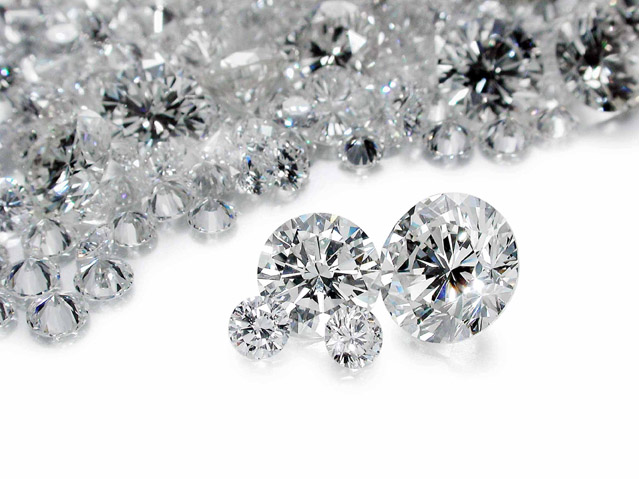With all of the various diamond imitations out there, it can be challenging to determine the difference between an authentic diamond and its imitation. Before making an impulse purchase or having your jewelry appraised before you know whether or not it’s actually worth the money, use these handy tricks to determine whether your diamond is the real deal or just another imitation.
Hold it up into light to see how it sparkles. Take a look into the inside of the diamond. If you see an assortment of colors inside the gemstone, it’s most likely a fake. Real diamonds will sparkle grey and white on the inside whereas fake diamonds will have rainbow reflections.
Weight the diamond. Cubic zirconia, which is the most common diamond imitation, weighs more than a genuine diamond of the same shape and size. So if the weight of the diamond is more than expected, you may be looking at a fake.
Breathe on the diamond. Genuine diamonds don’t retain heat, so when the warm air from your breath reaches the diamond, it shouldn’t fog up for more than a couple seconds. This won’t be the case for synthetic diamonds, which will remain foggy for a longer period of time.
Place the loose diamond on a newspaper. Real diamonds aren’t completely transparent so if you’re able to read the newspaper through the stone, it’s most likely an imitation. A real diamond would bend light so sharply that it would scatter inside the diamond, making the writing on the newspaper unreadable. If your diamond is already placed in a setting, make sure that you cannot see through the mount itself. If you can, you’re probably looking at a fake stone.
Look at the diamond through a magnifying glass. There are three things you should look for while looking at a diamond through a loupe, or magnifying glass. First, look for imperfections in the diamond. All natural diamonds have slight imperfections in the carbon, so if you’re looking at a flawless diamond, it’s most likely an imitation. Second, look at the edges of the gemstone. Real diamonds have sharp edges whereas fake diamonds have round edges. Lastly, you should look at the etching on the jewelry piece to determine what type of metal it is. Diamonds tend to be placed in fine metals such as gold or platinum so if you notice that the stone is placed in silver, then you’re most likely looking at an imitation.
Bring the diamond into a reputable jeweler. Most jewelers have special tools that can determine whether or not the gemstone is a diamond.
While all of these methods are useful in determining whether or not a diamond is genuine, they are not completely foolproof. Some diamond substitutes, such as moissanite are extremely hard to differentiate from an actual diamond. To make sure you’re dealing with an authentic diamond, make sure that you receive a certified GIA graded lab report that details all of the diamond characteristics. Also make sure that you are buying from a reputable source you trust.


